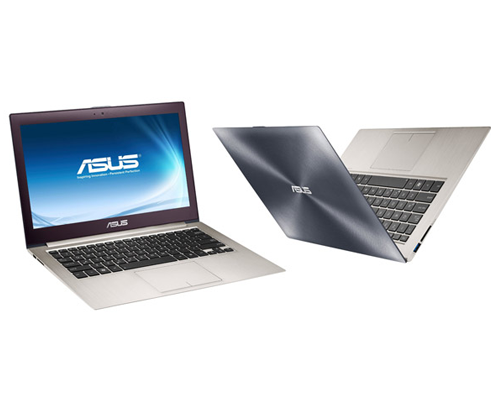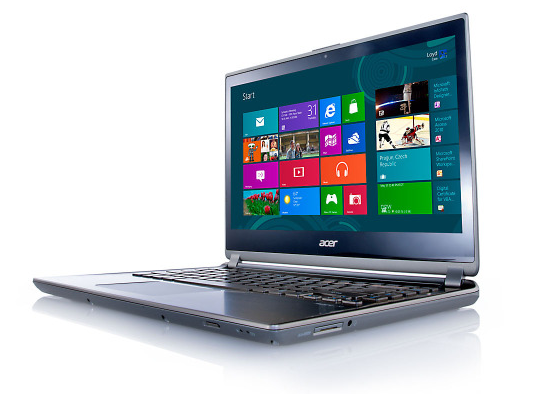Top 5 Ultrabooks Below $1000
The one factor that prevents many people from buying ultrabooks is of course the price. The very first generation of ultrabooks launched way back in 2011 was around $1000. However, this year there are so many different types and models of ultrabooks that you can buy based on its performance, size and the user’s needs and budget. You can find an ultrabook in the market that is worth every hard earned cent. Keep in mind that no laptop is perfect, so if you are a little price conscious, try weighing the pros and cons of each model to find the one that’s best for you.
Here are a few models listed below that are powerful enough to carry out daily tasks and also light, thin and attractive enough to run for a minimum of 4 hours without charge.
1. Asus Zenbook UX32A
The Asus UX32A budget Zenbook has good looks, body and battery life and is cheapest of the Zenbooks. It does lack some of the features of the Primes, but compensates well in price tag. It starts at around $600.

For this budget, you get a standard 13 x 7 screen, low power Intel Core i3 processor, which is still part of the latest Intel Ivy Bridge platform and hybrid storage. It is has a thin and light body similar to the other Zenbooks, with a good keypad, trackpad and battery life of over 6 hours for daily use. The disadvantage is that it is noisy and bundles with plenty of bloatware.
2. Lenovo IdeaPad U310
Lenovo’s IdeaPad U310 is a budget friendly ultrabook for students. It is a very good pick in class with a sturdy, excellent keyboard and trackpad. The laptop feels solid but does not use a full metallic finish. It uses aluminium for the lid cover and underbelly, while the interior and edges are covered in plastic. It will be appreciated by many students in schools and colleges, thanks to its ease of typing. Lenovo is affordable and costs less than $600 with the Intel Core i5 configuration. However, it adds some extra bulk and can go for only 5 hours on a charge.
3. Sony Vaio T Series 13
The Sony Vaio T Series 13 is a stylish, affordable ultrabook that gives a business oriented air. Sony’s Vaios are not usually affordable, but this ultrabook costs less than $700. It is made from brushed aluminium but the lid cover doesn’t feel quite sturdy. The keyboard, screen and trackpad are also not that good. On the other hand, the one advantage is that you can remove the battery and quickly access and upgrade the memory and swap the hard drive, which many users will appreciate.
4. Acer Aspire M5
The Acer Aspire M5 ultrabook is quite sleek, fast and fairly affordable.When comparing the M3 and M5 Aspire, both have one thing in common: speed. The Acer Aspire M5 is built on Intel’s Ivy Bridge hardware, with Nvidia’s GT640M dedicated graphics, and hybrid storage. It has a 14 inch glossy screen that offers only 1366 x 768 px resolution, over 5 hours of daily battery life and costs around $800.

However, this ultrabook comes with a heavy plastic body and is not well finished compared to other ultrabooks in the market today. If you need a sleek laptop that can deal with heavy tasks and gameplay, the Acer Aspire M5 stands above the competition as of now.
5. Toshiba Portege Z930
The Toshiba Portege Z930 is an old, thin and light laptop which was launched in 2012. It comes with a redesigned cooling system and is less noisy when compared to its predecessor, the Z830. It packs an up-to-date Intel Ivy Bridge processor. The body weighs less than 2.5 pounds, but the screen’s frame feels like it could crack sooner than later. You better treat it with extra care if you still fancy an ultra light and ultra thin ultrabook. The cost amounts to around $900.
Conclusion
It all depends if a budget ultrabook is worth the money or not. Some of the questions you need to ask are:
- Do you need an ultrabook for regular tasks and not so much for heavy activities and gameplay?
- Is it worth buying a lighter and thinner laptop?
- Are you ok with managing daily tasks on a well equipped notebook?
Finally, it’s up to you to choose what you want in a portable everyday computer. The models mentioned above will satisfy most of you as it can be used for schools, while travelling, on business trips and even as light gaming machines for kids.
